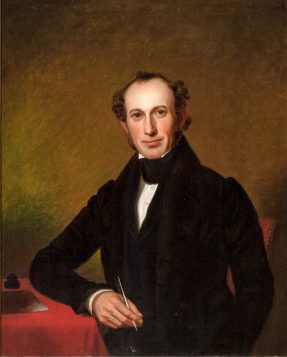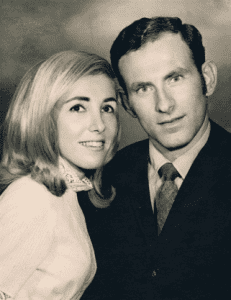Reviewed by Jeffrey Sanzel
Imagine sailing five months on a ship from New York to China, while not knowing whether you will survive storms at sea or attacks by pirates.
Imagine living in a Japanese temple recently made over to accommodate British and American visitors in a country where most of the population has never seen a person from another country or another race.
Imagine exploring a country where you are not sure of your own safety and where many men, including Samurai warriors, carry two visible swords.

These are just some of the thoughts posited by author Beverly C. Tyler in his latest book, Mary Swift Jones: Love and Letters from Japan, published by History Close at Hand and the Three Village Historical Society. The multi-hyphenate Tyler (writer-photographer-lecturer-local historian) is the author of Caroline Church, Founders Day, Down the Ways—The Wooden Ship Era, and Setauket and Brookhaven History (all reviewed in this paper).
Mary Swift, who was Tyler’s great- grandaunt, married Captain Benjamin Jones sometime in the mid-1800s. In September of 1858, at only twenty-four years of age, she embarked with him from New York on an extraordinary journey on the Mary and Louisa, a 145-foot square-rigged medium clipper bark that was constructed in Setauket.
The voyage would last three years and take Mary to China and Japan. While abroad, she wrote extensive letters to family and friends and returned with remarkable furniture, fine china, fabrics, and spices. Tyler touches on the ship’s traveling from port to port, carrying cargo between the Chinese ports of Hong Kong and Shanghai to the Japanese ports of Nagasaki and Yokohama.
Mary’s letters give the perspective of an American in a world completely foreign to her knowledge and experience. She reflects on the Mary and Louisa’s shifting crew; she shows fascination with the citizens of the various towns and cities; she pays tribute to the breathtaking landscapes.
Tyler highlights the appreciation of the countries and cultures with quotes from a range of visitors, often selecting lyrical passages from a variety of letters.
Voyages of this breadth faced storms, strong winds, illness, the threat of piracy, and the fear of the ship sinking. Additionally, violence was a shadow cast by the Japanese, who were less welcoming to a foreign presence.

In his journal on April 15, 1860, a passenger on the ship, New York Tribune reporter Francis Hall wrote, “It seems odd to start out for a walk by putting a revolver in one pocket and a copy of Tennyson in the other.” The possibility of losing family members at home was something that deeply concerned Mary. Of course, the Civil War broke out during their time at sea.
Tyler gives perspective on the perils of such undertakings. Quoting from the memoir of Egbert Bull Smith (the ship’s cabin boy, who later published Voyage of the Two Sisters): “Mrs. Jones did not know, nor did I, at the time, that when we sailed none of her friends expected to see her again in this life, and that all of the necessary articles for preserving her body had been placed on board.”
Mary survived the journey but contracted consumption, dying shortly after her return to the States at the age of 26. She is buried in the Setauket Presbyterian Cemetery.
Like all of Tyler’s work, the material is meticulously researched with exceptional documentation, details extracted from both primary and secondary sources. The book is highlighted with color illustrations, photographs, maps, and woodcuttings, giving his “narrative alive” tomes an almost three-dimensional quality.However, Tyler’s inherent sense of history and commitment to telling the American story are what truly imbue his works.
—————————————–
Copies of Mary Swift Jones: Love and Letters from Japan by Beverly C. Tyler are available for purchase for $10 at the Three Village Historical Society’s gift shop at 93 North Country Road in Setauket. Tyler will also be selling and signing copies of the book at the Three Village Farmer’s Market at the same location on Fridays from 3 to 7 p.m.

























